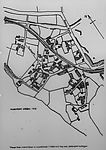 Mushroom Green 1919
Mushroom Green 1919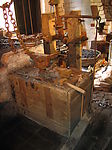 Chainshop at Mushroom Green
Chainshop at Mushroom Green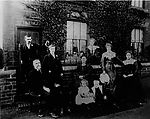 The Kendrick Chainmaking Family
The Kendrick Chainmaking Family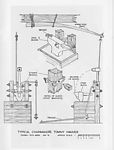 Chainmakers' Tools
Chainmakers' Tools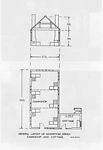 Chainshop & Cottage
Chainshop & Cottage

The nail makers of Mushroom Green found that they could easily switch to chainmaking, which was more skilled and slightly better paid than nail-making. The home-workers of Mushroom Green were producing small chain, principally for agriculture, such as cattle ties, trace chains, back-bands etc., as well as chains for use in industry and the mines.
By 1871 there was a working population of one hundred and thirty-seven, of whom ninety-nine were chainmakers, including thirty-nine women. The rest were iron-workers, such as puddlers and rollers, and a mixture including a policeman, baptist minister, publican, grocer and dressmaker.
Although chainmaking was never carried out on a large scale at Mushroom Green, a number of small chain factories were built around the 1850’s. One of these was owned by the Kendrick family, who lived at number 14 (see picture). The chain-shop was built around the 1860s, and was purchased by Mr. Harry Kendrick in 1927, and he continued to make chain there until his death in 1965.
A larger chain-works was set up by the Griffiths family to meet the demand for chain from the twenty or more pits sunk by the Earl of Dudley at the Saltwells Colliery next to Mushroom Green. The Griffiths family chain-works was so successful that they built their own testing shop at Mushroom Green, after the introduction in 1864 of compulsory testing for ships’ cables.
In the 1920’s Lord Dudley began to sell off the freeholds to the cottagers, who lived on the land. A knock down and rebuild process has always gone on, and continued up to the time it was declared a conservation area, so there was never a time when the area was not changing. Family members could take over their tenancy with the permission of the estate, which was important for chainmakers who passed their skills on down the family.
Chainmaking by hand continued until 1965 when Harry Kendrick died. The Griffiths family business, now known as “Griff” Chain”, switched to making electrically welded chain at a new site on the other side of the railway track.
Rollover the captions in the box to see the available images in thumbnail format, click the caption to see the full-size image
| Reference: | 692 |
| Keywords: | |
| Archive Ref: | |
| Updated: | Wed 21 May 2008 - 1 |
| Interpretation written by | Louis Howe |
| Author's organisation | Curatorial |
| Organisation's website |